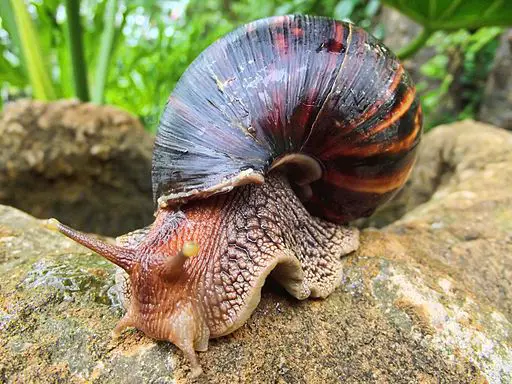The Invasion of the Giant African Land Snail
Recently Florida Department of Agriculture and customer services notified the detection and a portion of South Florida country is under quarantine.
Without state approval, giant African land snails, plants, soil, compost, or yard waste cannot be moved in or out of the quarantine area.
The Giant African Land Snail (GALS) is considered one of the most dangerous invasive species in the world. Originally from East Africa, these snails have been introduced to various countries worldwide, where they have caused significant damage to the ecosystem. The GALS is a voracious feeder, and its population can quickly get out of control, causing severe ecological disruptions. In this article, we discuss the threatening impacts of the Giant African Land Snail on the ecosystem.
Threatening Impacts of the Giant African Land Snail on the Ecosystem
1. Crop Damage
GALS is known to feed on a wide range of plants and crops, including vegetables, fruits, and cash crops. This feeding behavior poses a significant threat to agricultural production worldwide. The snails can cause crop damage by feeding on the plant’s leaves, stems, and fruits. This can result in stunted growth and reduced crop yields, leading to significant economic losses for farmers. Moreover, the GALS feeds on a wide range of plant species, including those considered invasive or rare, which can have adverse effects on the ecosystem.
2. Competing with Native Species
The GALS is a highly adaptable species that can colonize different habitats. This snail has a high reproductive rate, and a single snail can lay up to 1,200 eggs per year. As a result, the GALS population can quickly explode, out-competing native species for food and habitat. This competition can lead to a decline in biodiversity and ecological imbalances, which can have detrimental effects on the ecosystem’s health.
3. Damage to Infrastructure
The GALS is not only a threat to the ecosystem but also to human infrastructure. These snails can consume stucco, plasterboard, and other building materials, leading to costly damage to homes and other structures. Moreover, the snails can also damage electrical wires, which can cause power outages and pose a risk to human safety.
4. Human Health Risks
The GALS carries different pathogens that can cause harm to human health. Some of these pathogens include meningitis, rat lungworm, and salmonella. The snails can also transmit diseases such as schistosomiasis, a parasitic infection that can cause liver and bladder damage in humans. Moreover, the snail’s slime can cause severe skin irritations, leading to infections and other health problems.
The Giant African Land Snail may seem harmless, but its invasive behavior poses a significant threat to the ecosystem, agriculture, and human health. To mitigate these threats, it is essential to take preventive measures, such as controlling the snail population and preventing its spread. Moreover, raising public awareness about the dangers of invasive species can help prevent the introduction of such species into new ecosystems.
Image credit
Sonel.SA, CC BY-SA 3.0, via Wikimedia Commons

